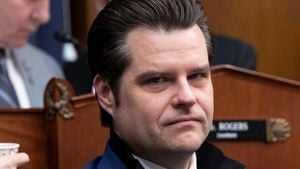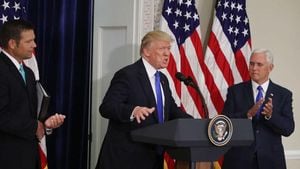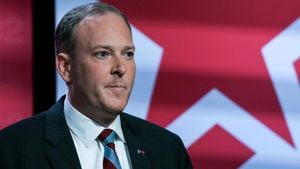Federal Reserve Chair Jerome Powell delivered key insights on the U.S. economy and interest rates during recent remarks, emphasizing the central bank's current approach to monetary policy. Speaking at an event organized by the Dallas Fed, Powell asserted, "The recent performance of our economy has been remarkably good, by far the best of any major economy in the world." This strong economic backdrop, he noted, gives the Fed the latitude to proceed cautiously with interest rate cuts.
Powell's comments come at a pivotal time as the Federal Reserve continues its deliberations on how to adjust interest rates. The chair indicated there isn't any immediate pressure to lower rates quickly, stating, "The economy is not sending any signals we need to be in a hurry to lower rates." This sentiment underlines the central bank's strategy of closely monitoring economic indicators before making significant policy shifts.
The Fed has already reduced its main interest rate target several times, having cut it by 0.75 percentage points over its last two policy meetings. Economists widely expect another quarter-point cut at the upcoming mid-December meeting. Yet, Powell's remarks signal uncertainty about the pace and extent of future rate cuts, especially with inflation trends still presenting challenges.
Inflation, which has ticked up recently, remains at the forefront of the Fed's concerns. Powell stated, "Inflation is running much closer to our 2 percent longer-run goal, but it is not there yet. We are committed to finishing the job." Such assertions highlight the Fed's dual mandate to promote maximum employment and stable prices. While opportunities for economic growth appear promising, persistent inflation has forced Fed officials to tread carefully where monetary policy adjustments are concerned.
During his remarks, Powell also addressed the potential impacts of the political climate, particularly with the recent election of President-elect Donald Trump. Trump's proposals for the economy, including tax cuts and tariffs, could introduce substantial changes, and Powell noted the Fed's need to adapt its policy thinking accordingly. The uncertain political environment adds another layer of complexity for the Fed as it navigates future economic landscapes.
Wall Street has reflected this uncertainty, adjusting expectations around rate cuts. Following Powell's comments, traders have lowered their forecasts, now expecting only two rate reductions instead of the previously anticipated four by 2025. This shift indicates marketplaces are weighing the Fed's cautious signaling alongside their interpretations of inflation and economic growth projections.
Powell's insistence on not rushing rate cuts positions the Fed as it balances the need for economic stimulus against the imperative to control inflation effectively. The next meeting of the Federal Open Market Committee will be closely watched as economic data continues to flow, providing insight on whether the Fed will proceed as projected or adjust its strategy based on new information.
Overall, Powell's remarks resonate with the Fed's broader objective: ensuring sustained economic growth without triggering renewed inflationary pressure. The central bank's approach of careful deliberation reflects both confidence and caution as it shapes the economy's financial pathways for the upcoming months.



